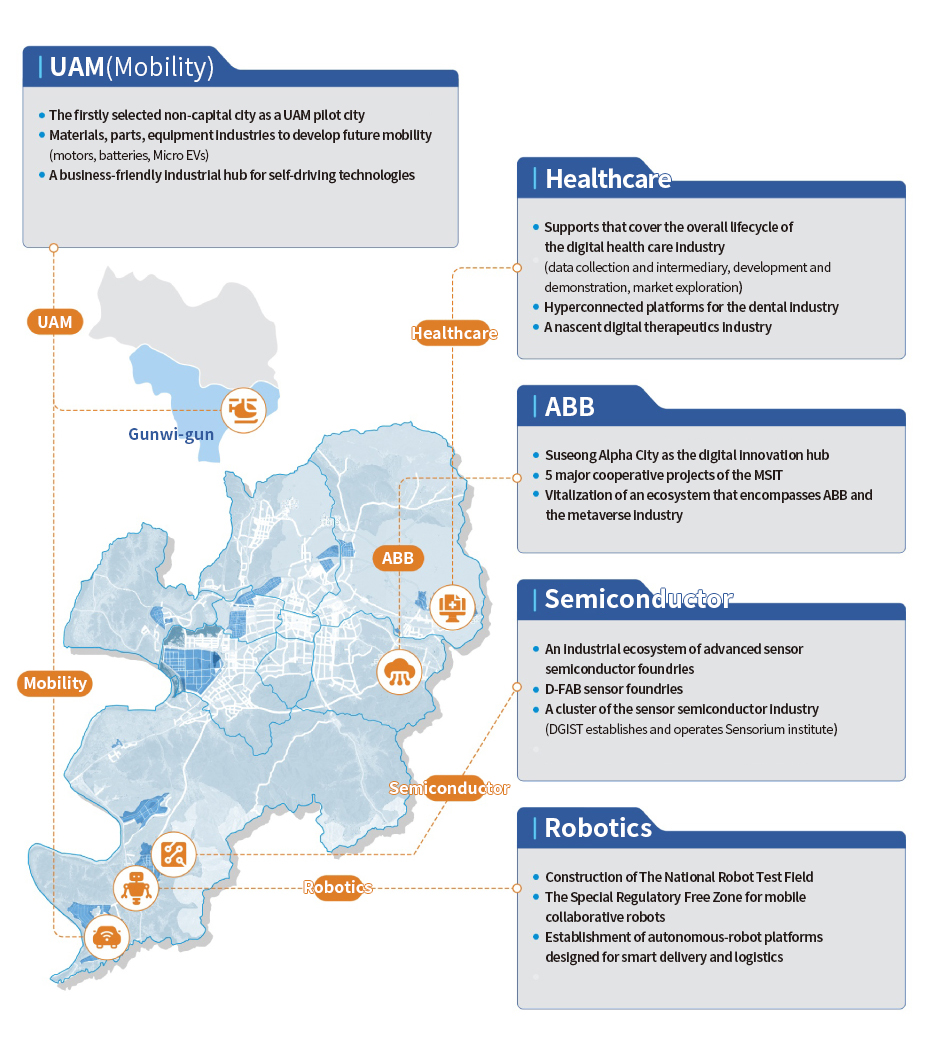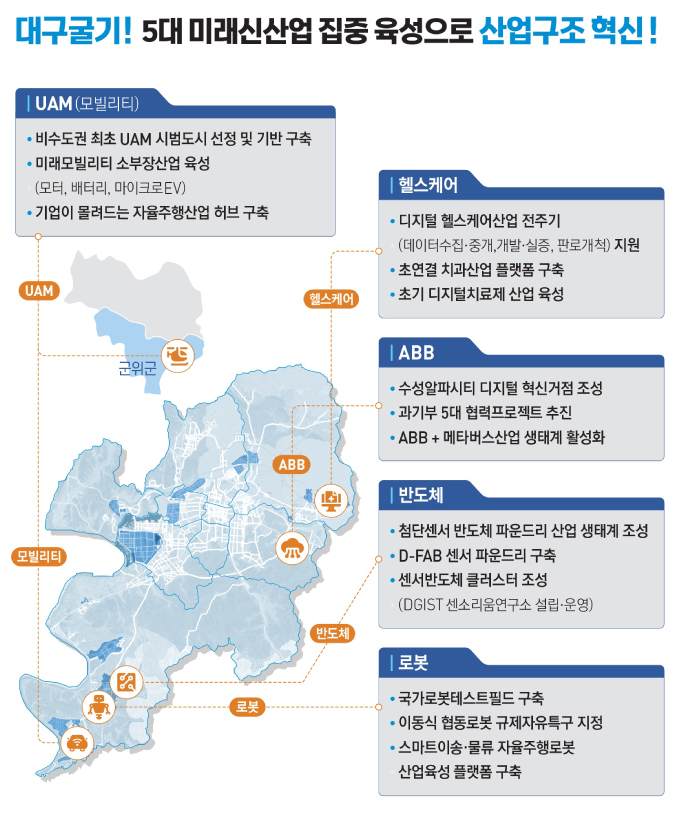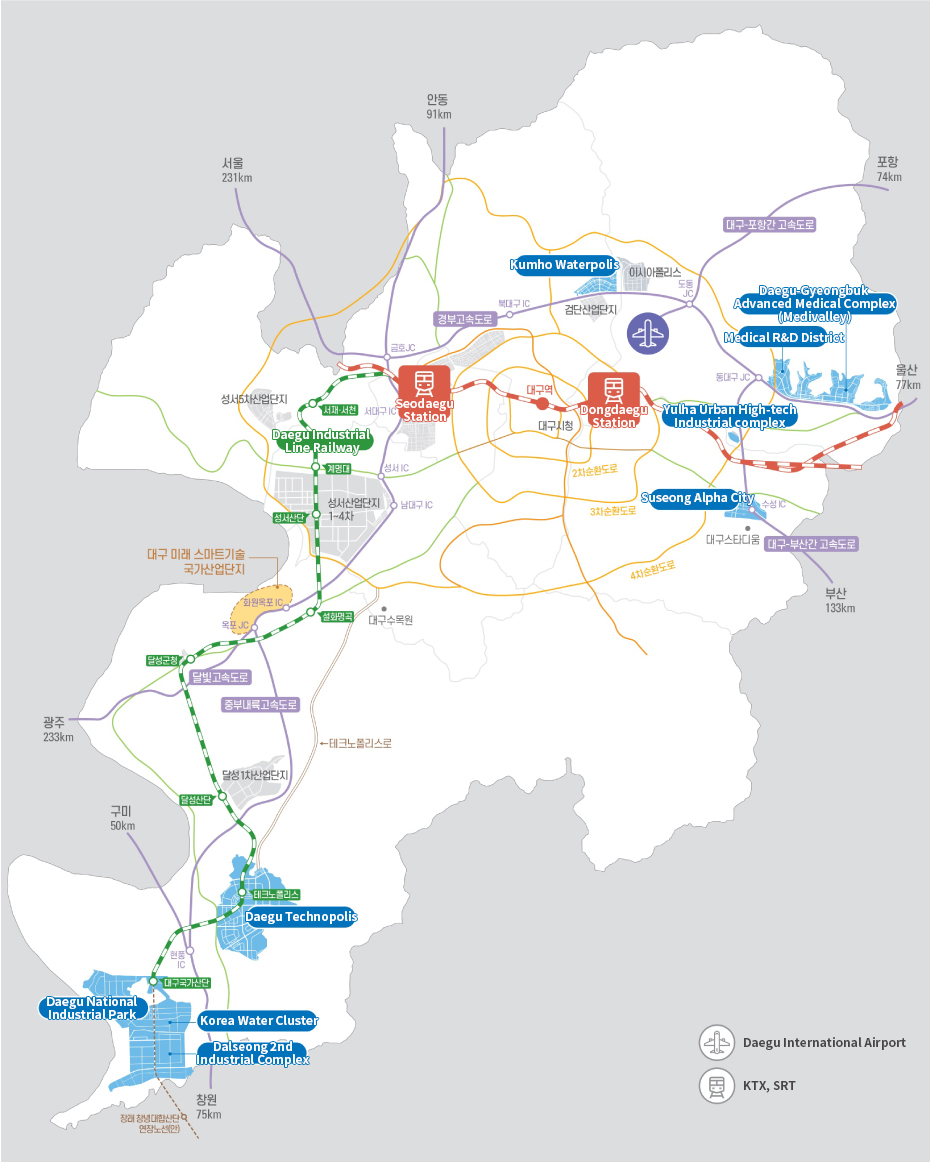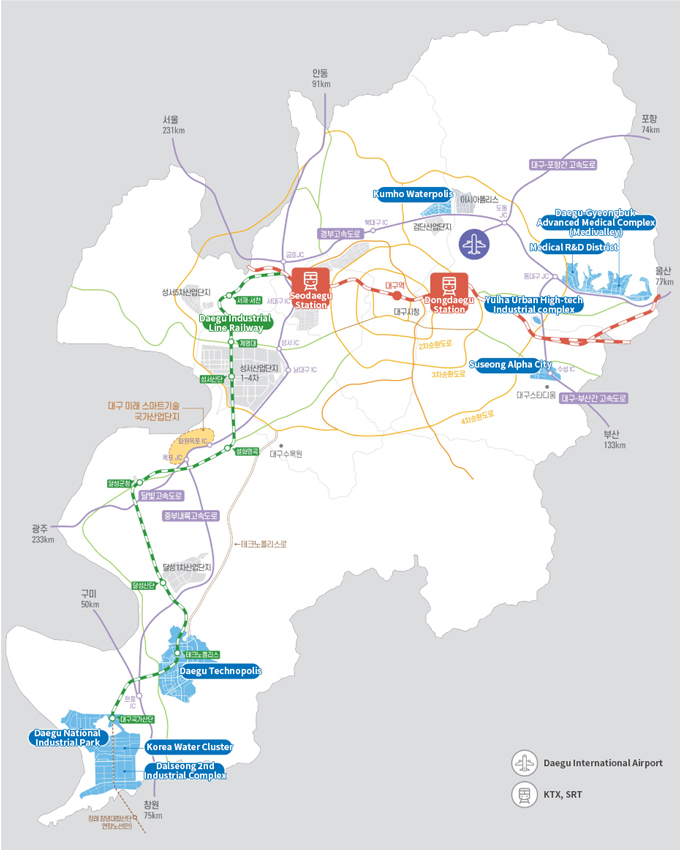General Status
- Home
- About Daegu
- General Status
City of Freedom and Vitality, Powerful Daegu
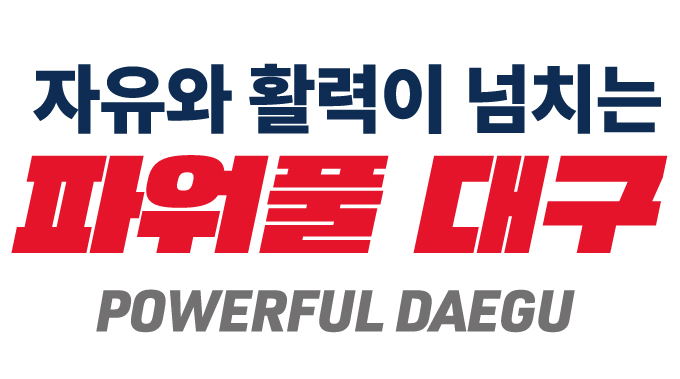
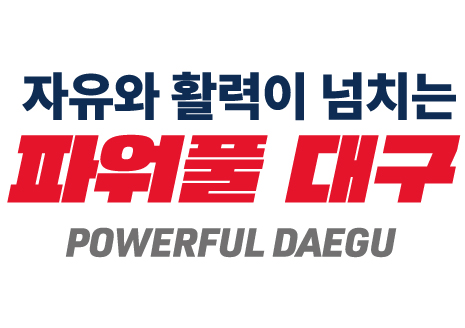
- We are poised for take-off to prosperity for the next half century.
- Daegu-Gyeongbuk new airport, development of cutting-edge technologies, and one-stop supports. Enjoy everything without a hitch.
Daegu is your best investment destination. We are always here for you.
About Daegu
(As of: 2023)
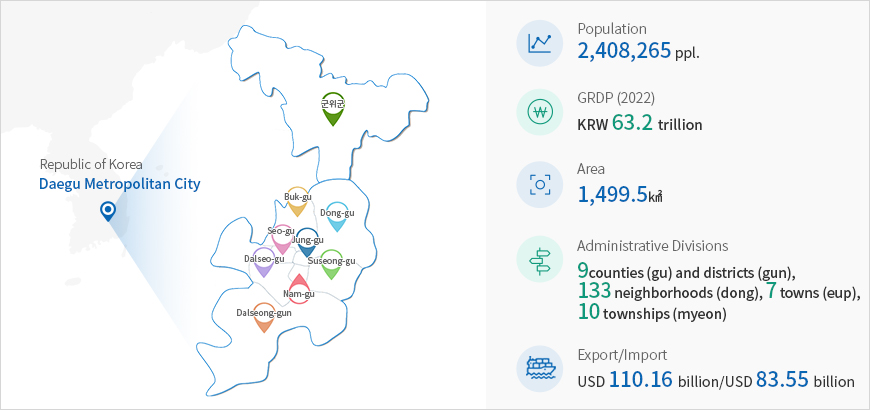
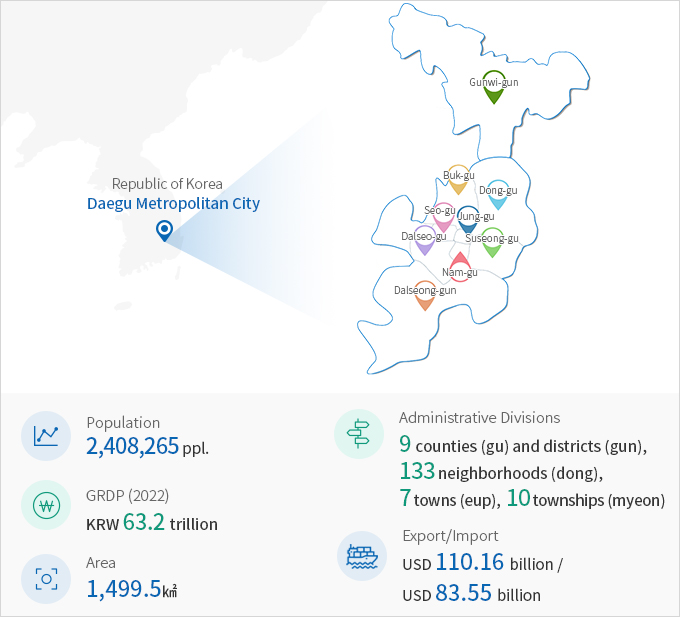
- Location: Daegu, located in south-eastern Korea, sits in a basin surrounded by mountains to the North and the South and a series of smaller hills to the East and the West. It is about 80 km from the seacoast and 293 km from Seoul.
- Population: 1,070,873세대 239만 3,259명
- GRDP: KRW 57.7 trillion
- Area: 883.7 ㎢
- Administrative Division: 8 gus‧guns, 133 dongs ‧6 eups‧3 myeons
- Export/Import: USD 9.678 billion / USD 7.374 billion

